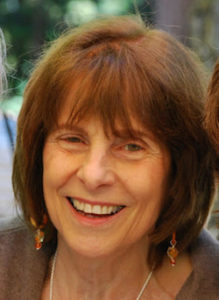 CONSCIOUS MUTUALLY SUPPORTIVE SITTING: a sitting which cultivates conscious awareness to, and within, the group field of Self and Other, providing participants the opportunity to grow in responsibility and sensitivity, and to notice how trusting he or she is of the atmosphere, moment by moment. From this awareness, each holds her/himself to a level of sharing that results in being optimally “supported”. This increases the capacity for self-knowing, self-regulating, and self-responsibility, as well as appropriate “daring” and expressing. This practice collectively deepens Trust and participation in Self, Community, and Relationship. In this format, the transmission force of Trillium Awakening is sensed through the field itself as the collective Being of the individuals, the awakened teacher and mentor and also the awakened and awakening participants.
CONSCIOUS MUTUALLY SUPPORTIVE SITTING: a sitting which cultivates conscious awareness to, and within, the group field of Self and Other, providing participants the opportunity to grow in responsibility and sensitivity, and to notice how trusting he or she is of the atmosphere, moment by moment. From this awareness, each holds her/himself to a level of sharing that results in being optimally “supported”. This increases the capacity for self-knowing, self-regulating, and self-responsibility, as well as appropriate “daring” and expressing. This practice collectively deepens Trust and participation in Self, Community, and Relationship. In this format, the transmission force of Trillium Awakening is sensed through the field itself as the collective Being of the individuals, the awakened teacher and mentor and also the awakened and awakening participants.
The question has arisen: “What is a Trillium Awakening sitting?” and also: “What do students attending sittings want in terms of a sitting?” This has prompted me to attempt to state my guiding principles about sittings. My own response comes in the following description of what I hope we can help make us all more adept.
(My statements are not meant to define or comment on any other sittings or teachers. I see that we all advocate what we are comfortable with, what we understand, and even deeply need, as sensed through our very unique perspectives, of Being flowing through each of us. In my opinion, one of the basics of Trillium Awakening is its allowance and encouragement of the individuality of each person, as long as one’s words and actions do not essentially violate another’s legitimate autonomy and dignity. At the same time, we cultivate a common understanding of the fundamentals of Trillium Awakening awakenings.)
My statements here do not mean that I will always and only adhere to this method of conducting a sitting. I may combine the sittings with this method and with the often-used method of the small groups at weekends and retreats. I may also elect to add in my own “discourse” or “teaching” for exploration by the group, for deepening understanding and self-reflection or just celebrating! I may not always be able to name ahead of time which approach will come up for what sitting.
Conscious Mutually Supportive Sittings:
1. The aim is to create trust of the group and trust of oneself in the group through conscious interaction and conscious self-regulation, for growth and healing.
2. This is a different model from the often used One-on-one Teacher to Individual interactive model, which works mainly by dividing up the time evenly as the teacher and/or mentor interacts with the student while everyone else holds the space (the usual format for small group at a retreat or weekend).
3. The trust is thus mainly cultivated in relationship to the group as a whole. This is a step in developing reliance that goes beyond “teacher-centric”.
4. However, the teacher is not “absent”. The role of the teacher is to help the group work out the “norms” for the group’s behavior and its aims, and then to help regulate the process if it falters from these norms. The teacher also intervenes if there is a situation that needs regulating for the safety of members.
5. Times for people to speak or not speak are “organically” felt into and regulated by sensing who needs what opportunity to talk and process and who is not particularly in urgent need. People can experiment with “daring” to ask for space—or they may be invited by the teacher, the mentor, or another person—and they may decline if they choose. This model is more “open” and 6. People may speak their “edges” but are not “required” to. Whatever sharing is offered is honored, and the person may be respectfully given feedback if they consent to it. They may ask for only the teacher or mentor or any particular person to give feedback.
7. Responses to the person’s sharing may arise, and be offered if there is a felt space for them. These would best be an expression of what was evoked in the listener from the speaker’s sharing—what arose personally within oneself--and would not be advice, opinions, judgments, labeling, etc., -- but instead, how this relates to one’s own patterns, needs, new understandings, etc. The responder speaks as “I”, “my experience”, etc., and does not comment make an assessment of the speaker (i.e., no cross talk).
8. This model depends upon the conscious listening, sensing, and speaking of every individual participant. The group grows more attuned and responsible while participating organically and mutually in support of all the members.
http://teachers.trilliumawakening.org/SandraGlickman/
